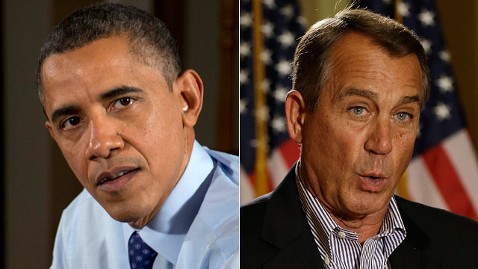Election Day marks the end of a political campaign. It also marks the beginning of fundraising for the next campaign.
Federal disclosure filings show that plenty of money was flowing through Washington immediately following Nov. 6. The most active political action committee in the weeks after the election belonged to the U.S. subsidiary of Swiss banking giant UBS AG. The company gave $122,000 in the three weeks following Election Day, the latest period for which information is available.
UBS has been ramping up its political giving in the past few years at the time that it has been sharply criticized, and even penalized, in Washington. UBS announced Wednesday that it has agreed to pay a $1.5 billion settlement with the U.S., British and Swiss governments for trying to manipulate a key interest rate used for price borrowing around the world.
The bank’s $122,000 in contributions from Nov. 7 through Nov. 26 are more than twice the $51,500 given by the second-most-active PAC, belonging to the Credit Union National Association. Other top PACs included those of Verizon, which gave $47,500, and General Electric, which gave $32,500.
The UBS PAC favored Democrats, giving $26,000 to 10 party members of the House Financial Services Committee, including Reps. Gregory W. Meeks (N.Y.) and Michael E. Capuano (Mass.).
A few lawmakers sought to draw in contributions for recounts and to retire debt from the campaign. But the most prolific fundraiser in the House, Rep. Shelley Moore Capito (R-W.Va.), appeared to be getting a head start on 2014 before her Nov. 26 announcement that she would challenge Sen. John D. Rockefeller IV (D) in what’s expected to be one of the tightest Senate contests in two years.
Capito raised $146,000 in the weeks after Election Day, almost all of it from corporate PACs, including more than $100,000 on the day she announced her bid. Four PACs gave Capito the maximum $10,000 donation: the Credit Union National Association, the National Beer Wholesalers Association, the American Bankers Association, and FirstEnergy Corp., which provides power to most of her home state.
Kent Gates, a political adviser to Capito, said that the congresswoman has stepped up fundraising throughout the cycle in anticipation of pursuing the Senate seat.
Several in the incoming class of senators wasted no time in setting up a “leadership PAC,” a fund that allows them to accept political money that they can give to other lawmakers or use for political or personal expenses. Sens.-elect Deb Fischer (R-Neb.), Mazie Hirono (D-Hawaii), Timothy M. Kaine (D-Va.), Ted Cruz (R-Tex.) and Heidi Heitcamp (D-N.D.) have all created leadership PACs.
Leadership PACs were so named because they were first created by leaders in both parties to support allied lawmakers, building allegiances within their caucuses and helping to secure the votes needed for plum leadership posts and chairmanships. But in recent years, lawmakers further and further down the totem pole have begun forming the committees, making the political PAC into a standard accoutrement for any aspiring Hill power player.
Several House candidates created leadership PACs even before the election, including Republicans Ron DeSantis (Fla.), Ann Wagner (Mo.) and Roger Williams (Tex.).
Rep.-elect Derek Kilmer (D-Wash.), already in tune with trends in PAC nomenclature, formed the Defense, Economic Renewal, Education and Knowledge PAC, or Derek PAC, on Oct. 2, a full month before he was elected to the seat of retiring Rep. Norm Dicks (D).











